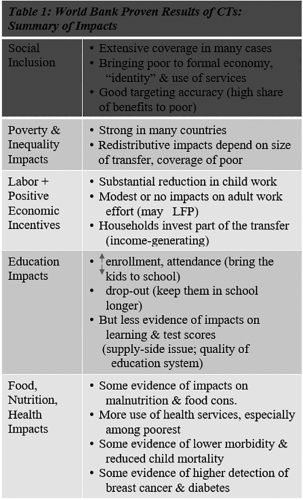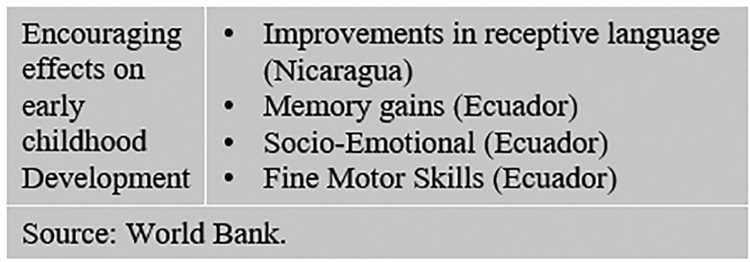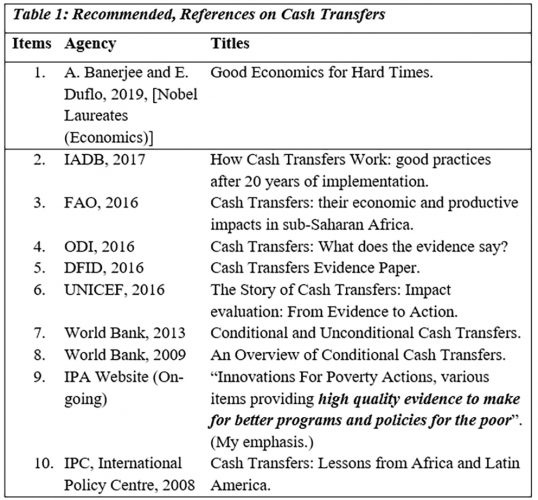Introduction
Today’s column continues my description of the nitty-gritty features or the key nuts and bolts of the universal basic income [UBI] mechanism, the Buxton Proposal, which I have long advocated for Guyana as the most effective means of eradicating its persistent poverty. Five of these features have been addressed thus far; and items 6 to 11 are addressed next in this column
The Remaining Features [Items 6 to 11 ]
For purposes of effective communication to non-specialist audiences, the World Bank has displayed in a single Table, under six headings, much of the empirical foundation and bases from which it arrives at the verdict that, universal cash transfers can be quite useful. The Table is reproduced below. These six headings are 1] social inclusion; 2] poverty and inequality impacts; 3] labor and positive economic incentives; 4] education impacts; 5] food, nutrition and health impacts; and 5] encouraging effects on early childhood development. This Table is reproduced below, revealing the potential for strong positive impacts on the scourge of income poverty.
Of further note, the United Nations, Food and Agricultural Organization, FAO, has also recently informed the development community that:
Evaluations of seven CTs in Sub-Saharan Africa have found that CTs generate a broad range of social, economic and productive impacts among poor small family farmers and — contrary to common perception these do not encourage dependency.”
“The CTs enhanced agricultural activities; … gave beneficiaries greater flexibility in labour allocation; helped them better manage risk; and CTs also benefitted the wider communities through local economic multiplier effects.”
Despite these glowing recommendations, to be sure, there are clearly limits to CTs. Thus, these are dependent on:
the dollar value of the transfer commitment: [Note I have recommended a “tithe” or about ten percent of Government Take]
the institutional capability of the UBI mechanism [hence my proposals on operationalizing the mechanism]
Note from an ideological perspective: All households benefit!
The ninth feature is a list of recommended readings, citing Development Agencies that express support for cash transfers as a poverty policy intervention tool [ see Table 1]
To be frank, technical challenges will remain intrinsically acute in the Buxton Proposal. These, however, ultimately drive my call for a feasibility and pilot study. Ultimately the fate of the Proposal is dependent on the level of political support it can garner nationwide.
Finally, two other observations are worthy of note. One is a major “appeal” of the Buxton Proposal is that it is straightforward, in comparison to other government poverty intervention programmes. It avoids having to design target groups and to control their discretionary features. This is not to deny grey areas in the practical determination of a Guyanese household. Decades of socioeconomic surveys however ensure this capability does reside in the Bureau of Statistics, BoS, which has regularly used the household as a cornerstone of innumerable official surveys.
Second, a major aim of the Proposal is to reduce both poverty and inequality. Consequently, cash transfers must be large enough to have a meaningful impact. The other observation is the distinction between conditional and unconditional transfers. In the instance of the Buxton Proposal; cash transfers to all Guyanese households pose a “false dichotomy”. Thus, while all households qualify automatically the transfer is without any explicit condition.Conclusion
The next topic addresses directly the drivers and metrics that undergird this UBI mechanism termed the Buxton Proposal.








